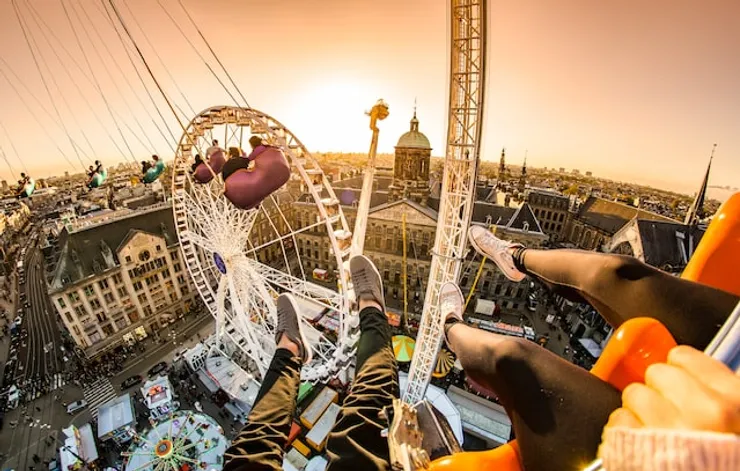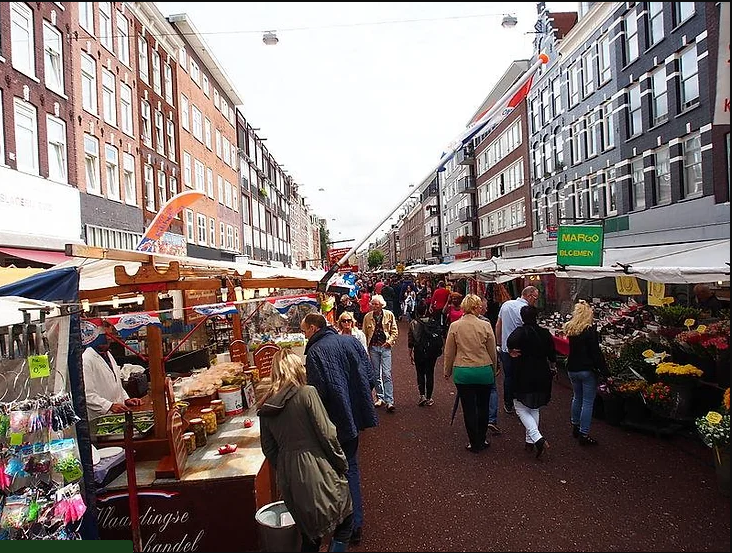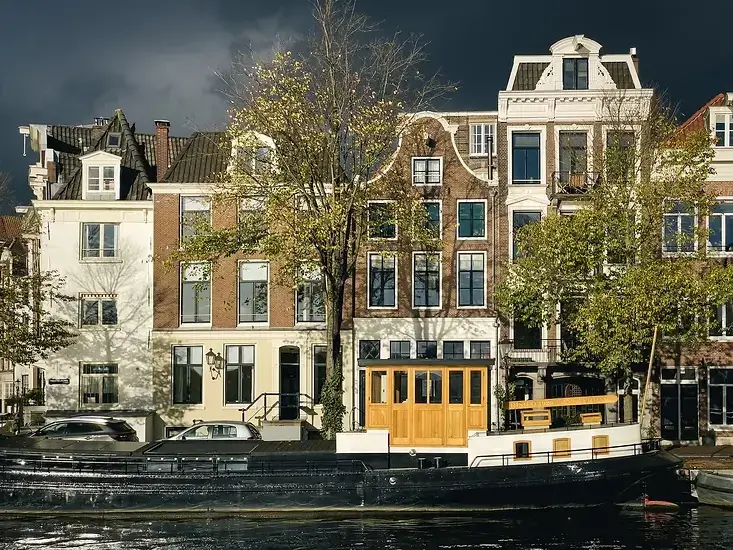
The stunning beauty of the aurora borealis, or northern lights, has fascinated people for centuries. This natural light show, with its green, pink, and violet colors, is usually seen near the Earth’s poles. However, sometimes this amazing display can be seen in the Netherlands, amazing everyone who gets to witness it.
Northern Lights in Amsterdam::
Located at a relatively low latitude, Amsterdam is not a prime location for observing the northern lights. However, during exceptional solar events, when the solar particles are intense enough to penetrate deep into the Earth’s atmosphere, the celestial display can sometimes be glimpsed from the Dutch capital.
Recent Sightings in the Netherlands:
In recent years, the Netherlands has seen some extraordinary sightings of the northern lights. In 2021, people on the northern island of Terschelling enjoyed a faint but beautiful display of the aurora borealis on the horizon. Similarly, in 2024, the phenomenon was visible in various parts of the country, including the northern provinces of Drenthe and Groningen, during times of increased solar activity.

Optimal Viewing Conditions:
To increase the chances of witnessing the northern lights in the Netherlands, certain conditions must be met. First and foremost, clear and dark skies are essential, as light pollution can obscure the celestial display. Additionally, the best viewing opportunities typically occur during the late evening and early morning hours, when the sky is at its darkest.
Favored Locations in the Netherlands:
While Amsterdam may not be the ideal location for northern lights viewing, several other areas in the Netherlands offer better prospects. The northern provinces, such as Friesland, Groningen, and Drenthe, are well-positioned for potential sightings due to their proximity to the auroral oval – the region of the atmosphere where the northern lights are most likely to occur.
Exploring the Dutch Countryside:
For those seeking to maximize their chances of witnessing the northern lights, venturing into the Dutch countryside can be a rewarding experience. Rural areas with minimal light pollution, such as the Veluwe region or the Wadden Islands, provide excellent vantage points for aurora viewing. Additionally, these locations offer a serene and natural setting, enhancing the overall experience.
Astronomical Forecasting and Alerts:
To stay informed about potential northern lights sightings, monitoring astronomical forecasts and alerts is crucial. Various websites and apps provide real-time updates on solar activity and geomagnetic conditions, allowing enthusiasts to plan their aurora-viewing adventures accordingly.
Embracing the Unpredictability:
The northern lights in the Netherlands are rare and unpredictable, but this makes them even more exciting to see. Being patient and ready for their surprise appearance can lead to unforgettable moments as the sky lights up with this amazing display
Conclusions:
By exploring the Dutch countryside, staying updated on astronomical events, and being open to the unpredictability of the northern lights, nature lovers in the Netherlands can boost their chances of seeing this amazing sight. Even though the aurora borealis is rare in Amsterdam, its brief beauty makes each sighting a special and unforgettable experience.
Frequently Asked Questions:
1. Can the northern lights be seen in Amsterdam every year?
No, the northern lights cannot be seen in Amsterdam every year. Their visibility in the Dutch capital is a rare occurrence and depends on factors such as intense solar activity and clear, dark skies. However, during periods of heightened solar storms, the chances of witnessing the celestial display increase, even in regions far from the poles.
2. What is the best time of year to see the northern lights in the Netherlands?
The northern lights are typically more visible in the Netherlands during the winter months, from September to April. This period coincides with longer nights and increased solar activity, providing better opportunities for aurora viewing. However, it is essential to monitor astronomical forecasts and weather conditions to maximize the chances of witnessing this natural phenomenon.













Comments
You need to be a part of a contest for onne of the best sites on the
net. I’m going to hignly recommend this blog!